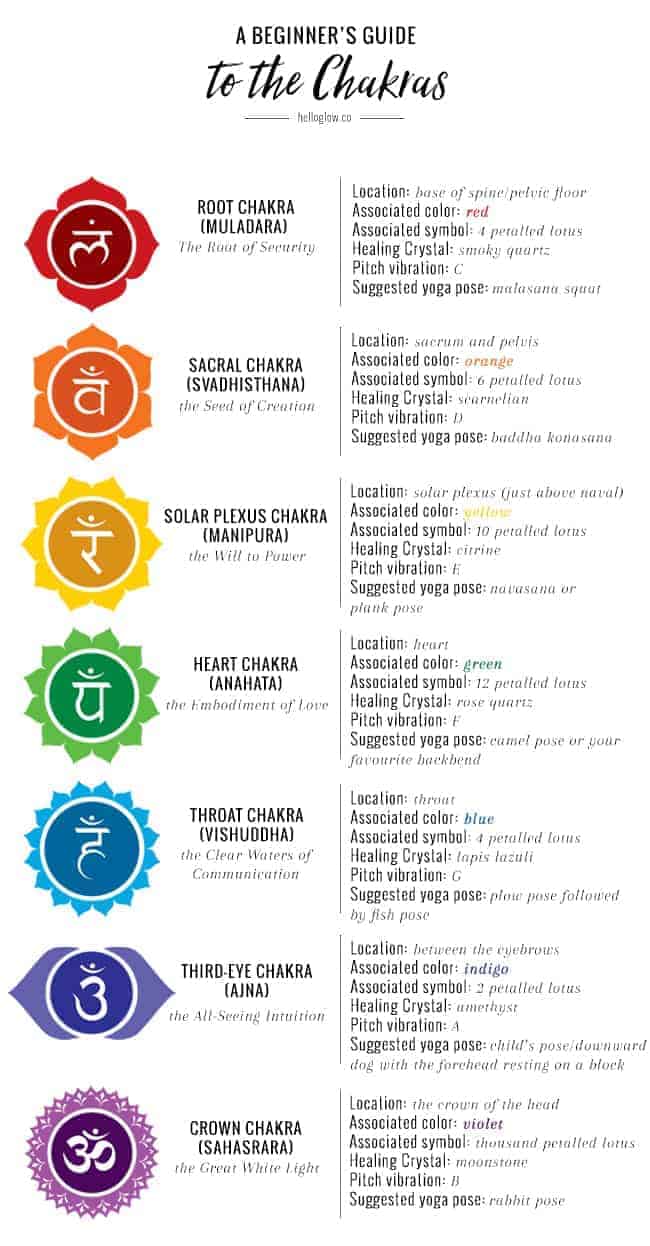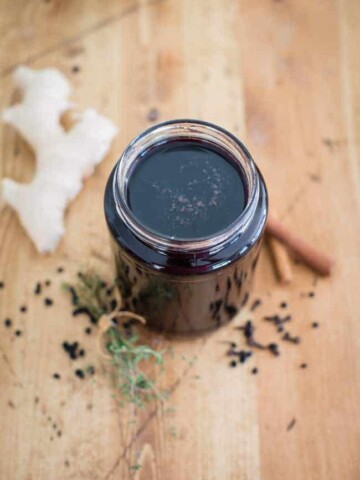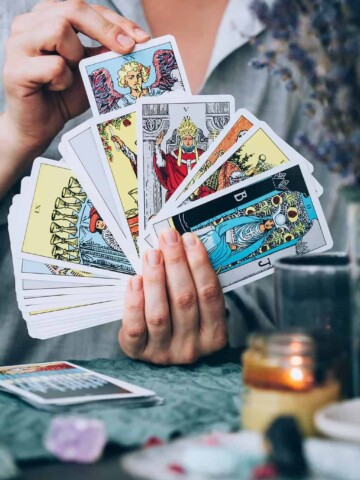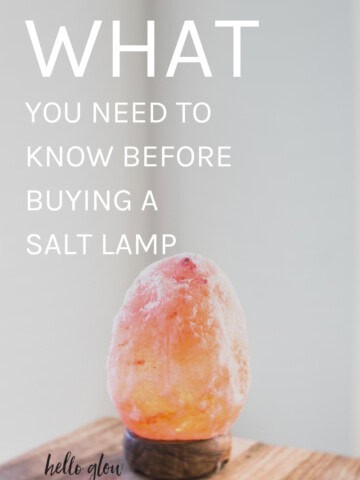For many of us, the word chakra brings to mind a whole slew of connotations—think hippie yogi chanting on the beach at sunrise. But while it might sound like New Age mumbo-jumbo, the concept of chakras as we know it has been present in Buddhist scholarship since the 8th century.
What are chakras?
The chakras are described as a hierarchy of seven coils ("chakra" means wheel in Sanskrit) of distinctive types of energy, loosely mapped along the central nervous system (spine) from the base of your tailbone to the crown of your head. They are subtle rather than physical, much in the way that the mind is the unseen energetic partner to the physiological brain.
Together, the chakras form a system based on the philosophy that monitoring and managing your energy intake and output is an integral part of your overall health and wellness.

Understanding the Chakras
Everything you think, feel, do, and believe about yourself and others can be categorized according to a type of vibration/energy, which corresponds to a particular chakra. In a state of optimal health, energy flows freely through all chakra points, allowing you to access a variety of strengths to overcome life's challenges.
But no one lives in a vacuum. You're exposed to a variety of influences and experiences (e.g., trauma, injuries, interactions) that impact your mind and body. Eventually, their energies can throw you off course and create energetic chaos at the corresponding chakra level.
Over time, your responses to life events can lead to blockages, and you become stuck in patterns of thought and behavior that prevent you from feeling at peace. When a particular chakra is out of balance by being either under- or over-stimulated, your personality, thoughts, habits, relationships, actions, and identities can feel misaligned.
By bringing awareness to these tiny pockets of energy, you can begin to see dysfunctional patterns that may have developed and work to guide yourself toward equilibrium, a place of harmony and peace.
You start by recognizing the source and quality of the imbalance. Then you can begin to address the instability by adjusting your daily practices (diet, work, exercise, sleep protocol, essential oils) and thinking patterns. A good entry point for beginners might include:
1. Surrounding yourself in or wearing the color of the chakra.
2. Meditating to music in the key of its vibration (or playing the pitch during meditation).
3. Carrying a balancing crystal in your pocket.
4. Incorporating yoga poses that bring circulation and vitality back to the area in question.
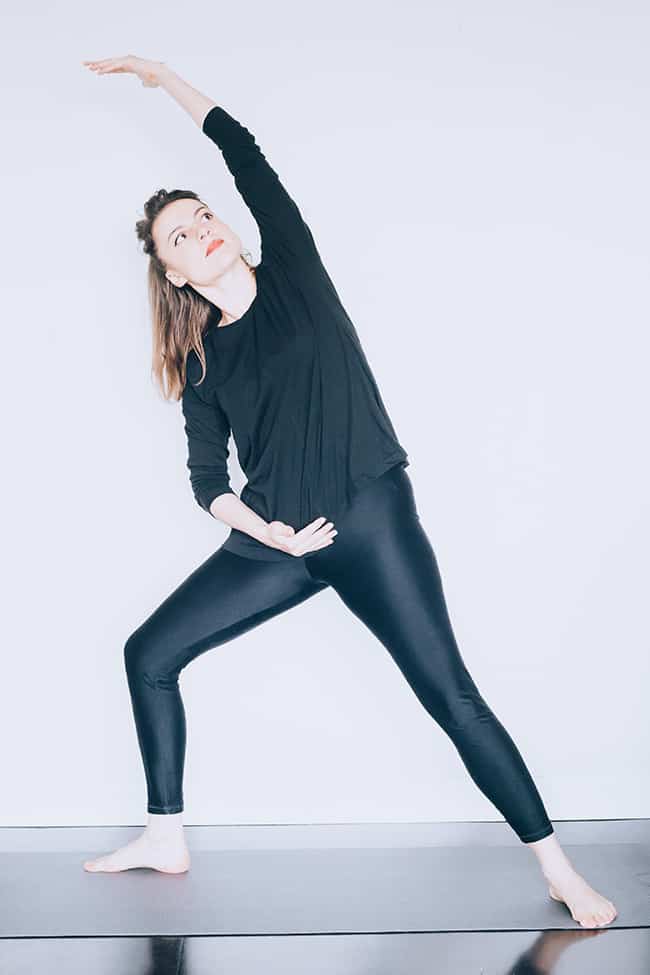
Finally, you would continue to monitor and adjust as needed. In addition to your own self-care adjustments, you may be interested in exploring treatments in Reiki, a Japanese healing practice that focuses primarily on clearing chakra blockages.
*Note: We believe strongly that self-care is essential and contributes greatly to our wellbeing, but we would also like to emphasize the importance of talking to your healthcare providers, therapists, and specialists with any concerning or persistent mental or physical health issues.
Below, you’ll find a quick run-down of the seven chakras. Take note of what resonates with you and how you have been feeling lately. Try working with the idea of opening or balancing that area for a few weeks, and see what can happen when you bring a specific plan of healing to a chakra in much need of some TLC!
1. Root Chakra (base of the spine)—“I am.”
A balanced root chakra makes us feel safe and supported. We feel as if we belong and deserve to take up space in the world. In balance at this level, you feel optimistic, trusting, secure, abundant, body-positive, and you prioritize healthy diet/digestion.
When imbalanced, you may feel negative, driven by your fears, anxious, insecure, depressed. You may struggle with eating disorders/addiction/anxiety disorders as well as sluggish digestion/constipation.
Self-care/maintenance: grounding yoga (slow and strong), wear red/red crystals, connect with nature for grounding energy (walks, gardening), grow your own food, go for a massage, practice daily dry brushing to stimulate your skin, eat more root vegetables/warm and nourishing foods, work with trained professionals to organize/develop plans of action or for therapy.
Recommended essential oils: earthy scents such as cedar, pine, patchouli, sandalwood
Location: base of spine/pelvic floor
Associated color: red
Associated symbol: 4-petalled lotus
Healing Crystal: smoky quartz
Pitch vibration: C
Suggested yoga pose: malasana squat
2. Sacral Chakra (sacrum/lower back)—“I feel.”
The sacral chakra is the seat of your creativity. When energy flows easily here, you feel inspired and impassioned, playful, and sexy. It governs your ability to feel the flow of desire, to create and procreate.
When balanced in this area, you feel creative, adaptable, sexually expressive, desirous, in touch with feelings, and you have healthy reproductive systems, expressive creative lives, and sexual relationships.
When imbalanced here, you may become “numb” to feelings, experience creative blockages, have codependent relationships, lack desire, experience mood swings, or be over-reactive. When there are blockages, there can be reproductive issues, fear of pleasure, and your creative abilities feel stifled. Overstimulated, you can become scattered and unfocused, starting projects that never see completion, or you might find yourself endlessly seeking pleasure.
Self-care/maintenance: get creative and play (make art, music, write) without a focus on the outcome, dance or explore spontaneous movement, swim, prioritize sexual health/erotic awakening, try yoga poses that focus on hips/pelvis, eat adventuresome foods, carry orange crystals, add more warm spices to your diet.
Recommended essential oils: arousing scents like rose and ylang ylang
Location: sacrum and pelvis
Associated color: orange
Associated symbol: 6-petalled lotus
Healing Crystal: carnelian
Pitch vibration: D
Suggested yoga pose: baddha konasana
3. Solar Plexus Chakra (above the naval/mid-spine)—“I do.”
The solar plexus chakra is your powerhouse. A well-balanced solar plexus chakra gives you personal power to feel in control, maintain personal boundaries, and stand your ground when confronting necessary changes. You'll notice changes in accountability, confidence, motivation, the ability to work to completion, feelings of pride in your accomplishments, self-discipline, organization, and time management.
Imbalances here can mean you are indecisive or unsure, act as a jellyfish/doormat, or are overly controlling and manipulative of others and feel competitive and egoic. You may experience issues with metabolism or upper GI issues (gas, indigestion).
Self-care/maintenance: eat spicy foods (lots of ginger, turmeric, cayenne), carry yellow crystals, incorporate strong core-focused yoga, take probiotics, try being a beginner at something, set clear and achievable goals and action plans, practice positive affirmations.
Recommended essential oils: any bright citrus, such as lemon, lime, grapefruit, or bergamot.
Location: solar plexus (area just above the naval)
Color: yellow
Symbol: 10-petalled lotus
Healing Crystal: citrine
Pitch vibration: E
Suggested yoga pose: navasana or plank pose
4. Heart Chakra (chest, upper back)—“I love.”
The heart chakra governs not only your ability to give and receive love but also your ability to fully love yourself. When you are stuck here, you may find you carry a lot of negative internal dialogue about not being worthy of love or not being enough. Your ability to love yourself first is essential, or your relationships may develop in a state of codependence rather than true communion.
In balance, you are confident and forgiving, and you practice and value compassion and kindness to self and others. A balanced heart means the ability to be both giving and accepting of love (self and others), empathetic, tolerant, charitable, forgiving, open-hearted, friendly, trustworthy, and respectful.
As you can imagine, an imbalance here may mean you become shut down to love, critical of self/others, deceitful, over- or under-empathetic, intolerant, likely to hold grudges, isolated, jealous, hateful, and you might play love games, or feel chest pain, or have heart disease.
Overstimulation here could lead to issues relating to extreme empathy. This is when you absorb so much of what others feel that your own emotional boundaries aren’t respected. Often people who work in professions related to healing can unintentionally take on the emotional struggles of those around them, which can affect their mental and physical health.
Self-care/maintenance: heart-openers in yoga, posture support when seated, drink green tea, add spirulina/wheatgrass/more veg to your diet, carry rose quartz or green crystals, become involved with charity work, “pay it forward” with random acts of kindness, get and love a pet, say YES to social invitations, incorporate intentional acts of self-love (take a warm bath, buy yourself flowers, get a massage, treat yourself to a nice meal).
Recommended essential oils: rose, jasmine, lavender
Location: heart
Color: green
Symbol: 12-petalled lotus
Healing Crystal: rose quartz
Pitch vibration: F
Suggested yoga pose: camel pose or your favorite backbend (such as cobra, bridge, bow or wheel).
5. Throat Chakra (throat and cervical spine)—“I speak.”
In balance, you find the ability to speak freely in a level-headed manner. You are unafraid of your truth. In a state of throat equilibrium, you express yourself clearly and concisely, communicate well with others, have a clear voice, precise speech, like to talk/share/sing, share honestly, and balance give and take in conversation.
When your throat chakra is blocked, you may fear communication and lose your ability to speak your truth. Sometimes people actually get a sore throat when they aren’t saying what they need to say!
When off-kilter, you may be fearful of speaking up, not know what to say, have a confusing communication style, use words we don’t understand, become overly chatty, or fall into the negative trap of transmitting gossip and lies. Is there something you need to vocalize that you’re afraid of bringing out into the open?
Self-Care/Maintenance: keep your throat warm/wrapped, drink soothing honey/ginger/lemon tea, take slippery elm lozenges/tea, gargle with oil of oregano, add in zinc supplements, practice self-expression by writing “morning pages,” sing in the shower, carry blue crystals, practice yoga that stimulates the thyroid/opens the throat (head-tucked poses like shoulder-stand, head-back poses like fish or camel.)
Recommended essential oils: blue tansy
Location: throat
Color: blue
Symbol: 16-petalled lotus
Healing Crystal: lapis lazuli
Pitch Vibration: G
Suggested yoga pose: plow pose followed by fish pose (or supported fish pose)
6. Third Eye Chakra (between the eyebrows, associated with the pituitary gland)—“I believe.”
Many of us have years of practice silencing our intuition and pushing away our inner guides, but that doesn’t mean that we’ve lost the ability to feel our way down the right path. Spending time tuning into your inner voice can be a powerful and profound practice.
A stable third eye means you are intuitive, trust your own wisdom, are open to learning new things, have a strong sense of inner knowing and perspective, clear thinking, rational thoughts and insights, a healthy memory, and a developed conscience/morality/ethic.
Imbalance here can mean hallucinations, blur between fantasy/reality, believing in conspiracy theories, paranoia, headaches, confusion, brain fog, cynicism, closed-mindedness, overly-opinionated, or suffering from insomnia due to racing thoughts, mental illness, dementia, and worry.
Self-care/Maintenance: try guided meditations, practice child’s pose with your forehead resting on a block, practice flexing your intuition (exercises), try tulsi tea, ask yourself for advice first, research from established/trusted sources, get back into higher learning, carry indigo/purple crystals, practice mindfulness meditation, write daily in a gratitude journal.
Recommended essential oils: lemongrass or frankincense.
Location: between the eyebrows
Color: indigo
Symbol: 2-petalled lotus
Healing Crystal: amethyst
Pitch Vibration: A
Suggested Yoga Pose: child’s pose/downward dog with the forehead resting on a block
7. Crown Chakra (top of the head, the energy that surrounds you)—“I understand.”
The crown chakra governs your ability to feel connected, spiritual, joyful, and fulfilled. It is also the chakra that involves thinking, learning, processing, and our search for meaning.
When you are clear, you feel a part of the world. You are open to new perspectives and welcome the evolution of thought. A balanced crown chakra feels like inner peace, a deep understanding of yourself and your place in the world, spirituality, a sense of oneness in life, and an alignment with a life's purpose. You accept the ebbs and flows life brings and have a healthy nervous system and a positive aura.
When you are blocked, your thinking is rigid and unyielding, and you are resistant to new ideas. When you're overstimulated here, you think you have all the answers, and your thoughts might become obsessive.
Imbalanced crowns can lead to doomsday thinking, generalized anxiety, a feeling of being lost or alone in the world, clinging to people or things, obsession, ignorance, materialism (searching for happiness/fulfillment in all the wrong places), feelings of futility, chronic fatigue, nervous system disorders, sensitivity to light and sound, or agoraphobia.
Self-care/Maintenance: yoga inversions like headstand and handstand, finding the right spiritual community, involvement in the community, helping the next generation to thrive, sound therapy, wearing clear/purple crystals, drinking nerve tonic tea, vipassana silent meditation retreats, going on a pilgrimage, offering up your services to others, minimalism (Kondo).
Recommended essential oils: lotus, palo santo, vetiver
Location: the crown of the head
Color: violet
Symbol: thousand-petalled lotus
Healing Crystal: moonstone
Pitch Vibration: B
Suggested Yoga Pose: rabbit pose. If you have any neck injuries, seated meditation with a block resting on the top of the head is a great option.
There is much more to be said and understood about the chakras and the nature of this subtle body energy, and one could dedicate years to their study, as many do. If you’re interested in digging in and learning more, there is a wealth of information both on the internet and in scholarly texts (I would recommend tracking down the work of chakra scholar Anodea Judith).
Do you practice chakra balancing in your daily life or enjoy the benefits of Reiki healing? Would you be open to trying chakra-balancing as part of your wellness regimen? We would love to hear from you!
259
